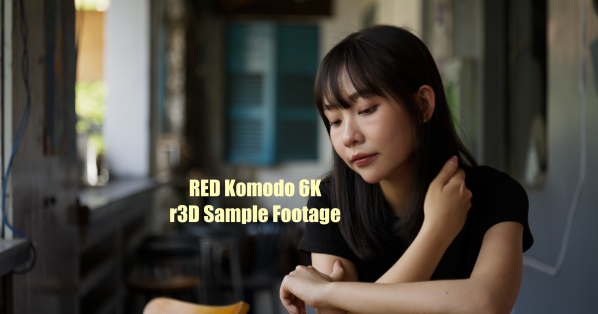https://youtu.be/kKSrUCp4NsA R3D RAW HDR Video Details: Model: Ngô Hài Hà. RED Komodo 6K. Meike super35 50mm T2.1 Cinema Prime. Kolari ND3. 6K 17:9 R3D MQ ISO 400, 24 FPS, T2.1. Edited in DaVinci Resolve Studio 18.6. MacBook Pro (late 2021), LG CX. ISO changed from 400 to 250 in post. No noise reduction.
We Converted REDWideGamutRGB/Log3G10 to Apple Log
Because, why not? 🙂 https://youtu.be/i0fKpCgHVRc
Graeme Nattress on Highlight Roll-Off
Graeme Nattress was kind enough to answer some questions we had about highlight roll-off in RED's Output Transform LUT. According to the Red.com website, ‘very soft’ highlight roll-off compresses highlights the least, while 'hard' compresses highlights the most. But 'very soft' makes HDR footage resemble SDR and ‘hard’ allows highlights to sparkle. So, what exactly... Continue Reading →
RCM IPP2 Still Broken
We still can't recommend using a Resolve Color Managed workflow with RED's IPP2 output DRT because it causes lifted blacks that can be seen in the title cards that precede and follow videos made in this manner. This doesn't happen when using RED's output transform LUT in a node-based color managed workflow, which is what... Continue Reading →
RCM: We Tested Some DRTs. Here’s What We Learned
In order to learn how DRTs affect the image, an R3D clip was processed three different ways in DaVinci Resolve Color Management: (1) with input and output DRTs set to DaVinci; (2) with input and output DRTs set to NONE; (3) with output DRT set to RED IPP2 with medium contrast and very soft highlight... Continue Reading →
Free KOMODO 6K RAW Sample Footage
Get yourself some RED Komodo OG R3D RAW footage (768.9 MB) to play around with here. Details: Meike 50mm T2.1 s35 Cinema Prime, R3D MQ 6K 17:9, 24 FPS @ ISO 400
RED Komodo: ISO & Noise Levels
The following were recorded in R3D Medium Quality with the body cap on the RED Komodo.
RED Komodo: To ETTR or Not?
In just the past 24 hours, there have been something like 175 visits to an old article we posted announcing our intention to return to ETTR with the RED Komodo, so we're guessing it's a somewhat controversial topic! To the best of our knowledge, few DPs on big productions ETTR but there do exist some... Continue Reading →
We Try Out The Ninja V + Komodo
After nearly a year, we finally got up the nerve to connect our Ninja V to the RED Komodo and to our great surprise, it didn't fry the SDI port! While our tinkering around with the Atomos Ninja V & Komodo didn’t produce great art it did allow us to discover that, although RED’s creative... Continue Reading →
Jarred Land Announces KOMODO Monochrome
On his Instagram page, Jarred Land announced the long awaited KOMODO Monochrome. The s35 6K camera has around double the sensitivity of the original Komodo and should be able to record as much as 20% more detail. With the traditional Bayer pattern color filter array (CFA) found in most cinema cameras, each pixel captures only... Continue Reading →
Scene Referred or Display Referred?
We're in the middle of comparing REDWideGamutRGB/Log3G10 and Rec.2020 ST2084 as the timeline color space. There's definitely a difference between how the two feel, we're just trying to decide which we prefer. Which one do you like working with?
First Look: RED Komodo R3D HQ vs. R3D ELQ
https://youtu.be/_jFpYHHX1xk All clips ISO 500, enlarged 999%, chroma noise reduction enabled. Click here to see our comparison between R3D HQ and R3D LQ. To really evaluate the image quality and see what compression is doing to our footage, it's necessary to play the clips back-to-back in HDR on something like a 55" LG OLED, and... Continue Reading →
RED Komodo Gets Major Update
The RED Komodo has just gotten a pretty substantial update with beta firmware version 1.7.0, including the ability to upload video to the cloud with Frame.io, Gio Scope, improved autofocus and ELQ R3D, among other improvements. We had a chance to try out the autofocus this morning but saw no difference from our previous tests.... Continue Reading →
Jarred Land Teases Komodo Update
Gyro data to R3D is a surprise. So is cloud upload capability. Hopefully the update drops by Christmas!
RED Komodo FW Update Info
The RED Komodo is to get Gio Scope, ELQ and improved AF, quite possibly before Christmas. Gio Scope is like if false color and the zone system had a child together but reflects the RAW sensor data and is unaffected by ISO and white balance. The Komodo will be the first of the DSMC 3... Continue Reading →
philmColor R3: More Sample Footage
There's next to no sample footage out there of Phil Holland's philmColor LUTs for IPP2, which is bonkers, because these are quite possibly the best looks out there for RED shooters. And without question, for RED filmmakers delivering HDR projects. When the LUTs are used in camera, you can monitor in SDR with the built-in... Continue Reading →
It’s The Real Deal: Phil Holland’s philmColor R3 LUT Pack
In this clip, we try out just a handful of the over 540 LUTs included in Phil Holland's philmColor R3 LUT pack. There is a link to the downloadable movie in the description for those who can't stand YouTube compression. https://youtu.be/Z53zdkSf1gQ


















